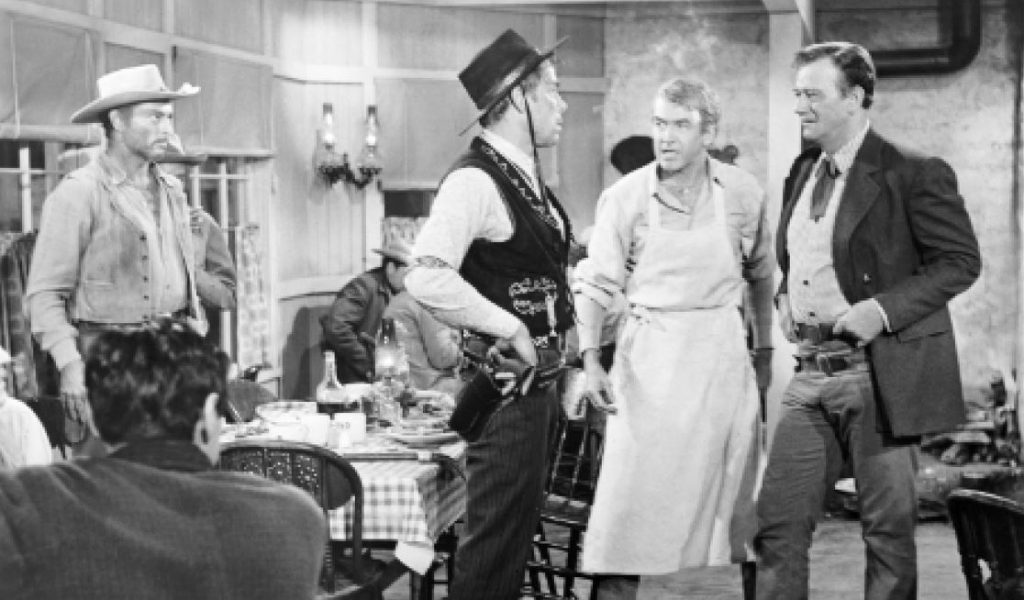
Directed by John Ford
Screenplay by James Warner Bellah & Willis Goldbeck
From a story by Dorothy M. Johnson
With: John Wayne as Tom Doniphon
James Stewart as Ransom “Ranse” Stoddard
Vera Miles as Hallie Stoddard
Lee Marvin as Liberty Valance
Edmond O’Brien as Dutton Peabody
Andy Devine as Marshal Link Appleyard
Jeanette Nolan as Nora Ericson
John Qualen as Peter Ericson
Willis Bouchey as Jason Tully (train conductor)
Carleton Young as Maxwell Scott
Denver Pyle as Amos Carruthers
Woody Strode as Pompey
Strother Martin as Floyd (Valance’s gang)
Lee Van Cleef as Reese (Valance’s gang)
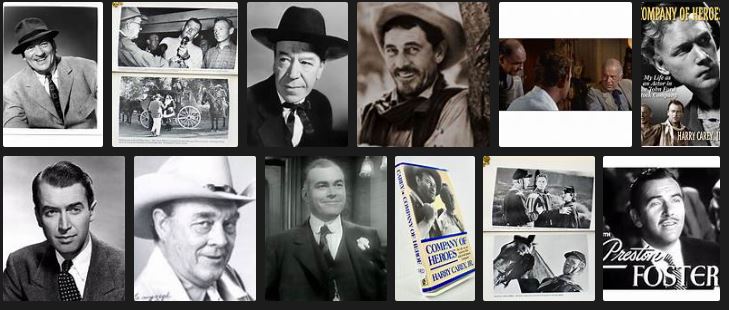
Pretty much Ford’s entire stock company except Word Bond because he was dead.
The mythologizing of the Wild West began when the West was still wild. Stage plays, dime novels and Buffalo Bill’s Wild West Show conspired to create the myth. Owen Wester’s novel The Virginian set the standard for the Western Hero. The historically accurate silents of William S. Hart were incapable of battling the silly westerns of Tom Mix, and in the sound era, Gene Autry.
John Ford established the Western in the Epic Landscape of Myth with Stagecoach and My Darling Clementine. Both are set like Fort Apache, She Wore a Yellow Ribbon, The Searchers, Sergeant Rutledge and Cheyenne Autumn in Utah’s spectacular Monument Valley. The Man Who Shot Liberty Valance is not set in landscape of myth, but in the town of Shinbone in the unnamed territory of the West, shot largely on a soundstage. It is a memory play at the intersection of myth and history in a fictional format.

Elderly Senator Ransom “Ranse” Stoddard with his wife Hallie return to Shinbone to bury the man who made their lives possible, represented in the present by a cactus flower. Tom Doniphon was the diamond in the western rough. A Shane who was part, yet outside the community, a man who lived by the same code as gunman John Book, who Wayne would play just a few years later. “I won’t be wronged, I won’t be insulted, and I won’t be laid a hand on. I don’t do these things to other people, and I require the same from them.”
This was a code a man like Liberty Vance did not understand.
At Doniphon’s wake a brass newspaperman challenges Ranse Stoddard why a United States Senator would return to Shinbone to bury a man all but forgotten. We are journeyed back in time 40 years as Rance relates his story. Stoddard is a freshly minted lawyer come to the West thinking his law books would protect him, ignorant to the fact most people are not priests of the Law like himself. Valance robs him of this notion out on the trail. Doniphon saves him for the first time.
In town, Ranse meets Hallie, a kindhearted illiterate waitress, Doniphon’s presumptive fiancé. He will teach her to read, and conducts her through the open door of books to the wilder world of civilization outside the land of myth. Statehood is looming for the Territory, on the ballot in a coming election and is opposed by the cattle barons north of the Picketwire river. Liberty Vance is hired as an enforcer to persuade the small ranchers and townies vote against statehood.
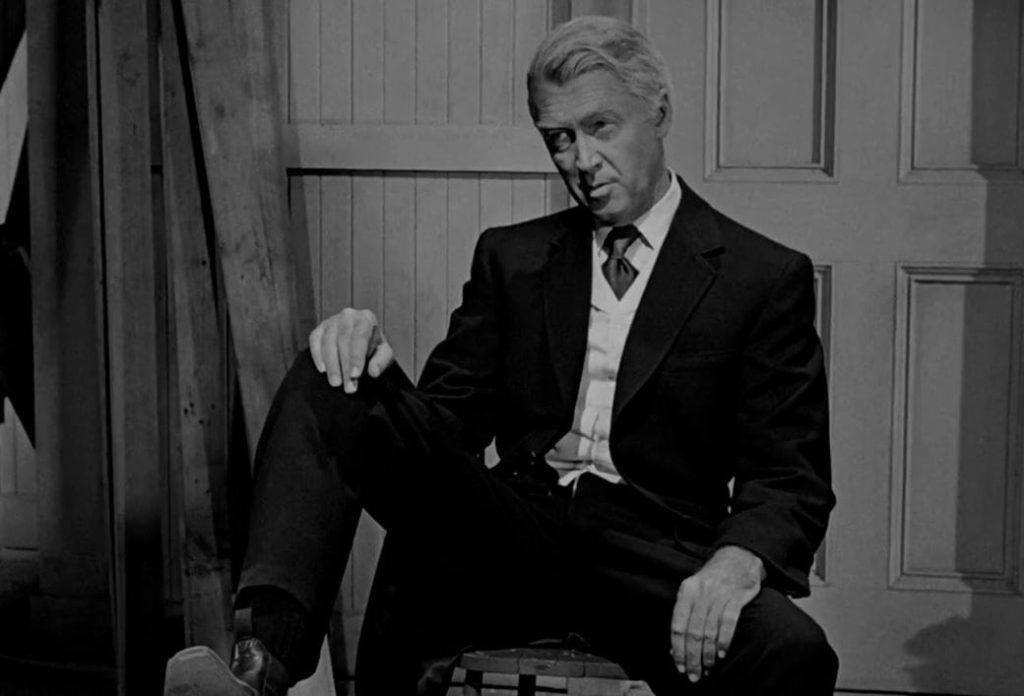
Ranse has hung out his shingle as a lawyer and has found employment as a part time reporter for the weekly newspaper, the Shinbone Star, which had endorsed statehood. The feud between Ranse and Valance that began on a desert road escalates and Rance takes Doniphon’s advice to get a gun, but he proves to be no Temple Huston.
Hallie is drifting away from the wild life Doniphon offers into the comfort of Ranse’s hope for the future. Ranse finally faces Valance in a classic street fight. Mysteriously, Valance is killed and Ranse rides the victory to the capitol city convention where the candidates for statehood will be selected to travel to Washington to make the case.
Then, John Carradine as Maj. Cassius Starbuckle makes a glorious bombastic speech condemning Ranse as a assassin unfit to advocate for statehood, he nearly drops out. He cannot build a career on the death of another man.
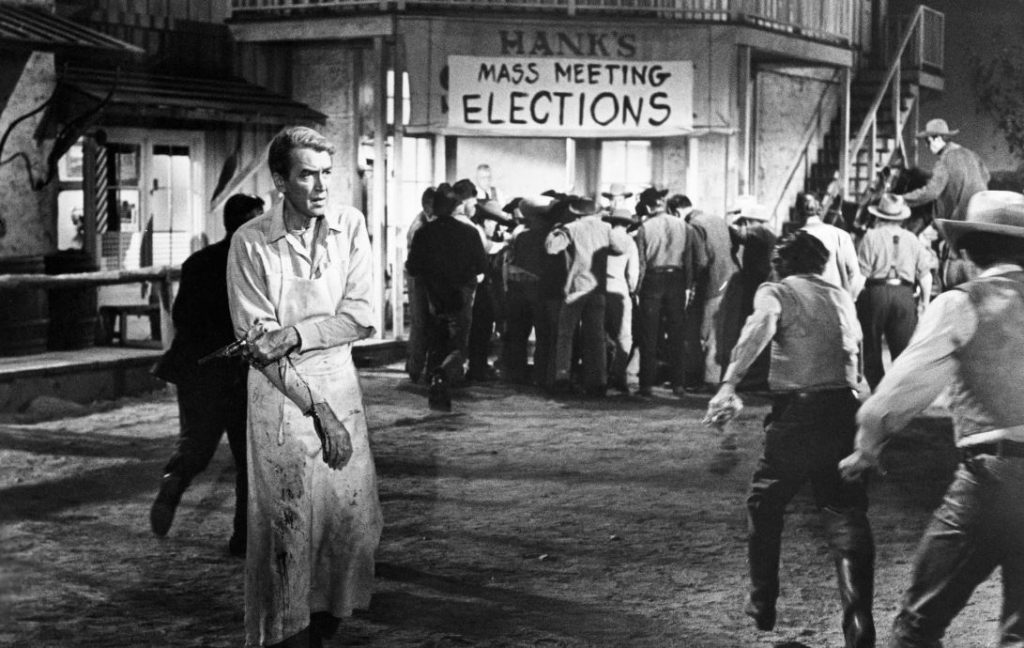
Doniphon himself appears to tell Rance; you didn’t kill Liberty Valance, I did. He could not stomach the idea of another murder by Valance. He knew he would be sacrificing any chance at future happiness if Ranse lived. His girl Hallie preferred Ranse and he will, like Ethen Edwards just a few years before him, be the man standing alone in the vista of the Monument Valley as the door closes on the story.
It should be noted that he shot Valance with a Winchester rifle, not his Colt’s revolver. (Westerns author Louis L’Amour observed John Wayne used a Winchester like it was part of his arm.) Doniphon tells him; you taught Hallie how to read, now give her something to read about. Thus emboldened, Ranse throws his hat back in the ring, goes to Washington, earns the Territory statehood, is elected governor, senator and appointed ambassador to Great Britain. Tom Doniphon is a broken man, his future gone for the sake of the woman he loved, so he slides into obscurity, all but forgotten save by his old friends.
Now unburdened by decades of lies, Ranse asked the reporter if he would print the story? Now comes the most famous line in Western movies:
“When the legend becomes fact, print the legend.”
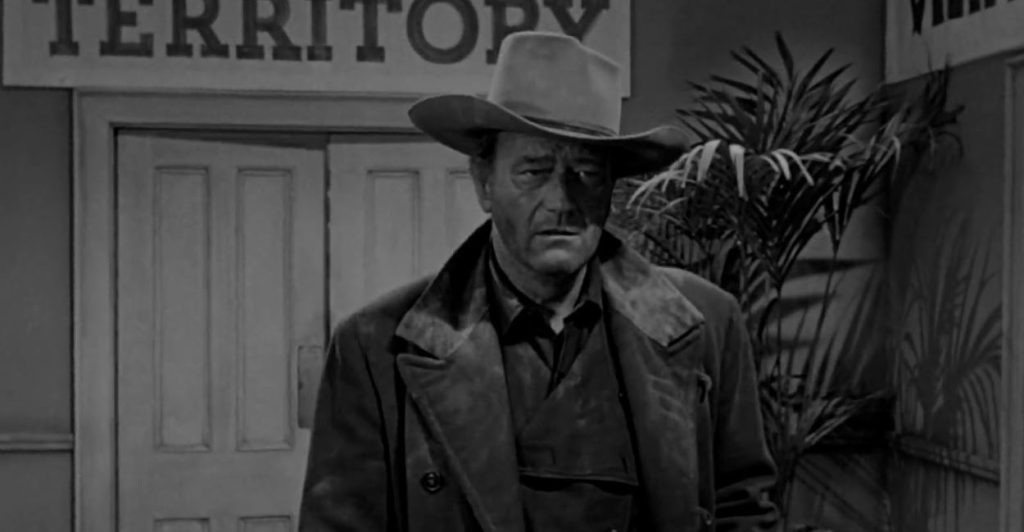
The myth will live on. When Ranse thanks the train conductor for the fine treatment he and Hallie received, he is reminded, “Nothing’s too good for the man who shot Liberty Valance!” Larry McMurty tried to escape the Western Myth in his epic masterpiece Lonesome Dove, but in the attempt only succeeded in making the myth all the grander. It is too ingrained in us.
On a personal note, I knew three of the actors in The Man Who Shot Liberty Valance. They were Woody Strode, Jeanette Nolan (whose son I would work with) and Denver Pyle, who I knew very well. Ms. Nolan was not really chatty, but both Woody and Denver admitted that while it was a tough film to shoot, they were happy with the outcome and praised John Ford.
Critic Otis Ferguson observed that Ford had the ability to release the imagination of everyone working on the picture. That cannot be said of many other directors. I almost forgot to mention the German novelist Karl May as a western mythologizer. He created his myth out of whole cloth. His character was Old Shatterhand, blood brother to the fictional Winnetou Apache tribe. Stewart Granger played him in a movie. His books were so full of shit I would not be surprised if he were an inspiration for Tarantino. He is a favorite western author with the rubes over in Europe.
Leave a Reply